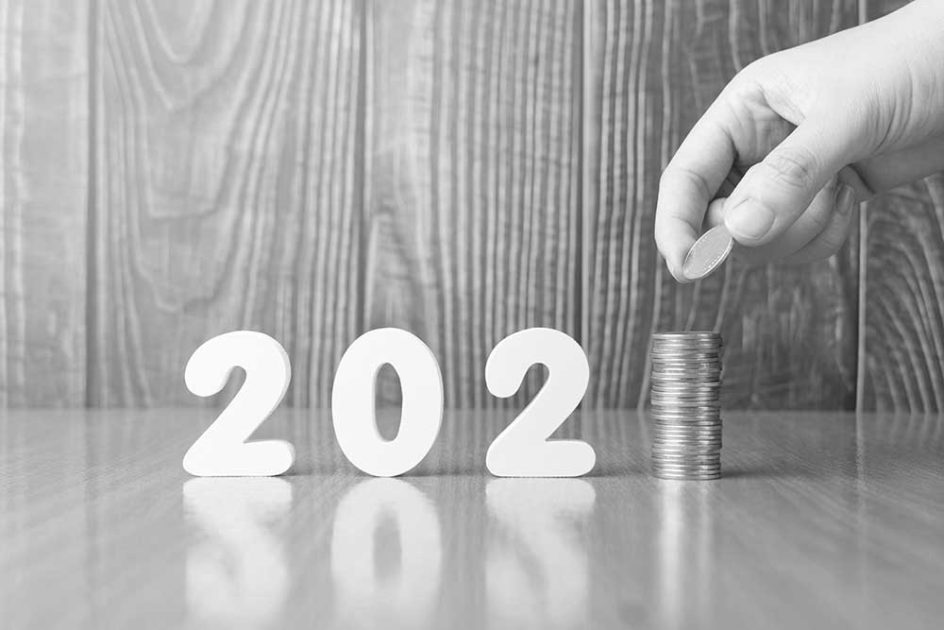2020 has been an unusual year for the accounts receivable management industry (to say the least). Agencies across the country found themselves making the shift to remote workers, trying to keep up with state-by-state collection restrictions and dealing with other logistical issues caused by running a business during a pandemic.
But the year also saw numerous pieces of legislation, (CFPB’s Regulation F to California debt collection licensing and more) that will impact how collections will operate going forward. Here is what several professionals from around the industry said they expect in the coming year and beyond.
Regulatory Changes
Whatever happens in the next few years, the regulatory landscape will play a large role. Those we spoke to believe that the credit and collections industry is finally ready to embrace communication technology as a common business tool thanks to Regulation F.
However, they note that in order to be successful in this new world of digital communication with consumers, agencies will need to prepare. Opt-in and preference processes, call center training, forms used and more will need to be updated for compliance.
How do you predict the industry regulations initiated in the past year will impact the future of collections?
“The new debt collection rule opens the door for consumers and the collection industry to communicate with each other using 21st century technology. In 2021 we will watch the industry retool their electronic communication channels to better serve consumers comfortably inside the regulatory guidelines established by the CFPB.
“We will also see consumers engaging debt collectors electronically in ways that serve their needs and accommodate their challenges. The ubiquitous use of electronic communication in the collection industry will prove to be a win for creditors, a win for debt collectors, and a win for consumers.”

Joann Needleman
“2021 is going to be an interesting year as the industry gears up for the implementation of Regulation F. Agencies will need to make some critical decisions about staffing, training and technology. The debt collection rule puts tremendous power in the hands of consumers, and it will be up to each individual agency to ensure those consumer preferences are met.
“In order to meet consumer expectations, agencies will need to redefine their infrastructure and the roles of their workforce. Questions that should be considered:
- Will you need more or less collectors?;
- Will you need more processing agents in order to ensure your collection software can process consumer preferences in real time?
- How will you train and monitor agents to ensure they are effectively communicating with consumers electronically?; and
- What updates and enhancements will an agency need to make to their website and consumer portals to enable self-service options?
“Additionally, Part 2 of the Rule was published on December 18. Among the regulations in Part 2 are changes to the validation notice. These changes will require agencies to revamp their forms and to consider whether they should be sent these notices electronically. Discussion about these changes must occur immediately and prior to the implementation which is November 21, 2021. Those discussions should consider input from all corners of your organization as well as conversations with you outside regulatory counsel in order to ensure your processes will ultimately comply and meet the expectations of the Rule.”

Leslie Bender
“2020 has been an amazing year for regulations, bulletins and emergency orders affecting the people we work with and the people from whom we collect. The topics these regulatory communications cover run the gamut from how to structure work from home programs with integrity (to keep employees safe) to talking with customers about hardships.
“Key among the 2020 regulations setting the stage for 2021 activities is Reg F’s confirmation that it is okay to use modern forms of communication to improve the customer experience in collections. There are many opportunities flowing from the intersection of the worlds of privacy, job and customer satisfaction, and consumer financial protection.
“I predict that as a result there will be brilliant opportunities in 2021 for companies in the collections industry who are invested in delivering self-driving touchless service to consumers that allow consumers direct how and when they get collections communications. Learning and managing consumers' communication preferences will be key.
“Also important in 2021 will be a strategic look at where collections can be securely and responsibly handled when outside of the traditional physical call center. Companies that engage and communicate in exciting ways with their remote workforces are poised for success in 2021.”
Agency Concerns
Regulatory changes may bring new challenges for compliance officers and training staff in 2021, but the many staffing and management considerations the pandemic created will remain.
Flexible work/life balance and remote work arrangements will remain present in 2021 until the spread of COVID-19 shows signs of slowing. In addition, there is much to consider regarding client struggles and future recovery rates.
What do you predict will be the top concerns for debt collection in the coming year?

JW Blair
Early 2021
“I think early on in 2021 the challenges will be staff and the flow of accounts from the original creditors.
“I wish turning the page on the calendar and writing a new year on checks would make this all go away but I don't think it will. As employers, we have had to learn to be much more flexible in scheduling, hours, and the locations that our staff work. Our local school systems have been in flux as to whether they were going to be in person or virtual. Sometimes the in-person students have to revert to virtual if a teacher or child is exposed. Then the parents have to adjust.
“Parents are in a terrible position: Balancing their child's education and their family's income. We are lucky enough to have been able to quickly pivot to a work from home environment for most positions and I think that will remain in place for the early part of 2021. Perhaps the vaccine or herd immunity will come more quickly but I think that will persist through the second half of the school year. At the end of the school year, parents will not have child care because they have not needed it for a year plus, so that will be a new wrinkle we will have to iron out. Keeping our staff at a sufficient level to meet our clients' expectations will certainly be a challenge.
Client considerations
“My other concern for early 2021 is when we will see accounts from our clients? Many clients have been working from home and with decreased staff just like we have. They too have had challenges to work their accounts internally in a proper manner to see if they can recover them before they send them to their agencies. I'm sure some are experiencing a tremendous backlog. Others are under some sort of moratorium where they cannot disconnect or evict accounts that are past due.
“Anyone who received forbearance due to COVID has had their account status frozen in time. There is an untold volume of accounts out there to be worked. At some point, these are going to flow through to the agencies and we hope we have the staff in place to service them properly and get back on track. We will need to survive until then and have our staffing levels adequate when we are granted the opportunity to work those accounts. Clients are going to be depending on the revenues we return to them to help restore their cash flow after it was interrupted in 2020.
Uncertain Recovery Rates
“After that our next challenges are going to be recovery rates and the rush to comply with the CFPB's new rules.
“I am concerned about the recovery success we will have when we are flooded with all of those accounts. I feel that the first stimulus check, released in the Spring of 2020, was used by many consumers to help catch them up on past due bills. It did not hurt that this check came shortly after tax season - I believe the temptation to spend on something frivolous may have already passed so they used it for what it was intended: to pay bills. Nine months later, I believe many more people are in a much more dire position.
“I expect they are farther behind and will have to make some tough choices as far as which bills get paid and which ones get ignored. Perhaps the new round of stimulus being discussed will help? I also fear that many households have had to make sacrifices and stay home to watch and educate their children, meaning they earned less in 2020. When you couple that situation with having close to 15% unemployment in May, I am concerned that tax season, where we traditionally have great success, will not exist or will not have the same impact in 2021 as we have seen in the past.
Implementing CFPB Compliance
“On top of all that, there are the new rules from the CFPB. Depending on what the politicians do, we can expect to need to come into compliance late next year. That is a new set of challenges. Due to the political risks, I feel like many agencies will delay working on policies and procedures to come into compliance until the politicians have blessed these rules. Technology partners are not going to have that luxury. They cannot afford to write their term paper the night before it is due and will have to begin working now in order to meet those deadlines.”

Cameron Karim
"I think right now, the number one concern will be new regulations. The CFPB released their new rules for Regulation F in late October and the second part in December, and the rules seemed fairly balanced between favoring consumers and debt collectors.
“Still, there are many stipulations included in the rules that have upset a lot of people. The inclusion of call limits has been particularly concerning. Many collection agencies feel 7 calls per 7-day period is too few and consumer advocates feel it is too many! Personally, I feel the CFPB did a good job creating an equitable solution.
“The second part of the new rules was released nearly two months later and seems to carry with it more operational and logistical difficulties. A prime focus of the second set of rules is the revised dispute and validation portions of the initial dunning notice. These changes, particularly for an agency wishing to take advantage of the ‘safe harbor’ option available, will require significant alterations to existing letters. Needless to say, compliance in these areas will be time-consuming and potentially costly.
Obstacles
“In short, for every pathway they’ve opened for us, they’ve created as many obstacles as well. With a changing administration, however, and a Democratic majority in Congress, there is a distinct possibility the Director of the CFPB may soon be replaced. Likewise, the rules we’re discussing today may yet see more reviews and revisions. In all likelihood, this could also forebode a return to the ‘Bureau of old’ that chose to regulate through fines and enforcement actions – something none of us in our industry will be looking forward to.
“Overall, as helpful as the new rules were intended to be, I genuinely believe the new regulations will negatively impact a good number of small to medium-sized collection agencies, including ACA members, that do not have the resources available to implement and comply with the necessary changes.
Limited Content Message Challenges
“One example of this is the new Limited Content Message. This is something agencies have been praying for since the Foti decision in 2006. This new provision provides guidance and a safe harbor when using the CFPB’s prescribed language when leaving voicemail messages for consumers. Unfortunately, it requires the agency to leave their company name in the message. Agencies with names that clearly indicate they are a debt collector, such as ABC Debt Recovery, will now be forced to change their names to use this message and avoid third party disclosure violations.
“Agencies scrambling to create and obtain proper DBAs might not seem that daunting until you consider that most agencies are licensed in more than one state. The licensing requirements and hoop-jumping required to change names in various states is, once again, very time-consuming – and in many cases, quite costly.
Potential for Reg F Changes
“Although released at different times, both parts comprising the full final rule will have one effective date: November 30, 2021. While the first part has already been filed with the Federal Register, the second is not scheduled for publication until later this month. This leaves the new administration ample opportunity to review Part II and greater leeway for possible amendments going forward. In essence, there is still a great deal of anticipation and uncertainty on how the Final Rules end up.
Pandemic Challenges
“The second big challenge this year will continue to be the ongoing pandemic. Although stimulus checks may help in some instances, countless consumers are strapped for cash. Currently due bills for utilities, rent, mortgages and vehicles are taking precedence over bad debt and collection items like medical.
“Additionally, some of the hardest hit sectors include the businesses that employ these very consumers. Shutdowns and lockdowns have crippled businesses across the nation, many of which will never reopen or return. We see the results in rising unemployment each day and these are the very people we are contacting to resolve their delinquent balances. These conversations have never been easy but they’re more difficult than ever during these trying times.”
AR’s 2021 Technology Needs
Where do you see the industry heading in the next year, and what plans does your company have to meet client technology needs?
“The collection business continues to mature and expand into new areas through automation. This includes more first-party pre-collections, pre-payment of debt, and the ability to use technology for self-pay.
More clients want to interface collection platforms with existing financial applications and tools. Collect! plans to support this expansion through a newly enriched API interface, new dashboard and reporting tools, and the addition of a client portal to improve payment collection.”
“I expect that over the next year the debt collection space will continue to supplement traditional outreach efforts (letters and phone calls) with ways for consumers to “self-serve” their outstanding obligations.
In addition, the new rule from the CFPB (Regulation F) has paved the way for electronic communication channels, which will allow for more effective ways to engage with the consumer.
Over the next year, we will have several new products and partner integrations that focus on consumer self-service and consumer engagement through electronic communications. These changes are long overdue and we’re excited about the additional opportunities that this will bring to the industry!”

Kristen Makanoa
"2020 taught us the importance of several items:
- Businesses need to take a digital first approach to collecting payments.
- Businesses will only be successful at a digital first approach if they consider and plan for a positive customer experience.
- The technology businesses use can greatly impact both customer experience and their bottomline.
"As a Customer Experience (CX) and User Experience (UX) Designer, I know first hand the changing landscape of digital design and the migration to creating better online experiences for people. In 2021 (and beyond) consumers will become more and more focused on digital solutions to meet their needs. Tasks that were traditionally done in-person in the past (including payments) will become digital-first tasks.
"Engaging with the consumer on their terms will continue to grow in importance for businesses that want to not only survive but thrive. This means using electronic methods such as email, text and online chat to communicate and collect payments will become much more prevalent."









